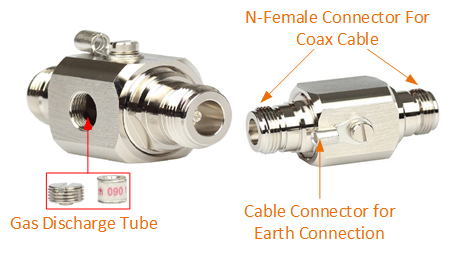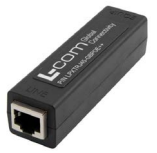Nearby lightning strikes usually generate a short duration high current (thousands of Amps) pulse. This impulse contains components with very diverse frequency ranges i.e., both low and high frequency. Typically, the VHF and UHF components can be picked by outdoor communication antennas leading to generation of very high voltages and currents. A lightning surge protector is therefore needed to shunt this very high current to the ground without transferring it to the connected devices.

For coaxial cables, the strike creates a potential difference between the center conductor and the cable shielding of the coaxial cable. This then forces a high voltage differential and damaging current flow through the equipment. A lightning surge protector is therefore needed to shunt this very high current to the ground without transferring it to the connected devices. Designed for high-frequency, analog signals carried by coaxial cables.

Also available are ethernet surge protectors designed for communication devices using ethernet technology like outdoor wireless access points and PTP links. Optimized for digital signals used in ethernet networks. They limit voltage surges and spikes from damaging network devices by either blocking or redirecting excess voltage back to the ground, ensuring that only the standard voltage levels reach the connected devices. Ethernet surge protectors often include features to protect against surges coming through data lines as well as power over Ethernet (PoE) lines.
Below is an image for an ethernet surge protector.

It is important to note that these are not direct strike devices but only handle the effects of nearby strikes. In the event of a direct strike your protection device would most likely be permanently damaged.
Search for Coaxial and Ethernet cable surge and lightning protection devices using this filter:
Find more articles on network devices protection here:

